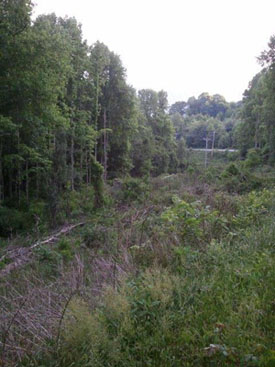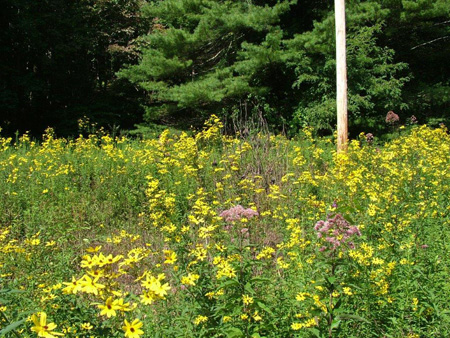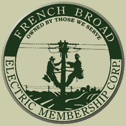|  |  |


|
Right-of-Way (ROW) Management FBEMC maintains right-of-way along over 4,500 distribution miles of line (including over 3,300 overhead miles) to ensure that our crews can work safely in the area and to protect our service reliability. Trees that grow into our lines will cause outages and endanger our crews. The ROW corridor for our aerial lines is a width of 40 feet, 20 feet on each side of a centerline determined by the centerline of the electrical facilities as installed.  We use different mechanical methods for clearing the right-of-way, cutting new trees, and side trimming adjoining trees. You have probably seen our maintenance crews using chain saws and bush axes to clear the corridors beneath our power lines. Because keeping the lights on is our primary goal, we are clearing the trees that could grow into the overhead power lines that deliver electricity to you and your neighbors. Trees that grow under the power lines are the greatest threat to reliable electric service. However, trees outside the 20 feet limit can also be a threat so they will be side trimmed, unless dead or leaning heavily toward the electric line, and in those cases they will be removed. Unfortunately, after we clear the right-of-way, our job is not complete. A mature root system remains beneath the surface. This system will issue root extensions that quickly become new saplings. Since we can't cut the entire right-of-way every year, trees may be 15-20 feet tall by the time that we return. The battle is never-ending. With 3,300 miles of overhead electric distribution line, we tackle this problem every day. Our maintenance program is like the bridge painting crew that puts the last touch on one end of the bridge, then must go to the other end to start all over again. As soon as our crews complete a circuit around the system, it is time to start again. Consequently, FBEMC generally inspects and clears your section of the power line rights-of-way every 5-6 years.  Along with our work to clear cut the rights-of-way, we have another strategy for maintaining our rights-of-way. In some areas, FBEMC is using an environmentally safe herbicide to convert these wooded corridors to greenways, which are dominated by flowers, grasses, ferns, and shrubs. In short, we selectively remove the root system that produces trees and make room for meadow plants in a safe and effective manner. How does this work? When new trees are about four feet tall, we return to that section of right-of-way. Rather than clear cut everything, our professional crews apply a low-volume spray directly to the leaves of each tree in the power line corridor. Working a simple backpack sprayer, each applicator moves from tree to tree, spraying a 4.5% herbicidal solution. The two herbicides used are Rodeo and Arsenal. Rodeo and Arsenal have "plant specific" mode of action. Their active ingredients are absorbed into the leaves, travels to the root system, and interrupts the tree's ability to process amino acids. The tree, and a good portion of the root system, is eliminated. When we return in 4-5 years, we find about half the number of trees that would be present if we had manually cut the right-of-way. After the second application, the conversion to a corridor with meadow-typical plants is essentially complete. The repetitive cycle of cutting and regrowth of trees under power lines is replaced with a stable greenway, dominated by low-growing plants and shrubs. Other than the occasional new sapling, the use of the herbicide then becomes unnecessary. Our crews continue to trim branches that grow into the line from trees that border the right-of-way. This maintenance practice is known as side trimming. When FBEMC considered a herbicide program, we set high standards. We found that a right-of-way conversion program is considered more effective and safer for the environment when compared to bushhogs and chains saws. Why is this program considered environmentally friendly?
Each month FBEMC will list the areas that will be clear cut and where we will be applying herbicide on the bottom of this page and in the Electrifier. Have questions or want more information? November 2021/December 2021 ROW Schedule Burnsville District Cutting Schedule: Murphytown, Huntdale, Big Creek, Hwy 19W, Cane River Gap Road, Ewart Wilson Road, Cattail and Transmission Line (Burnsville to Relief and Relief to Bakersville) Herbicide Schedule: None scheduled Marshall District Cutting Schedule: Spivey, TN, Little Sandy Mush and Meadows Town Road Herbicide Schedule: None scheduled |

Send Questions or Comments to webmaster@frenchbroademc.com

